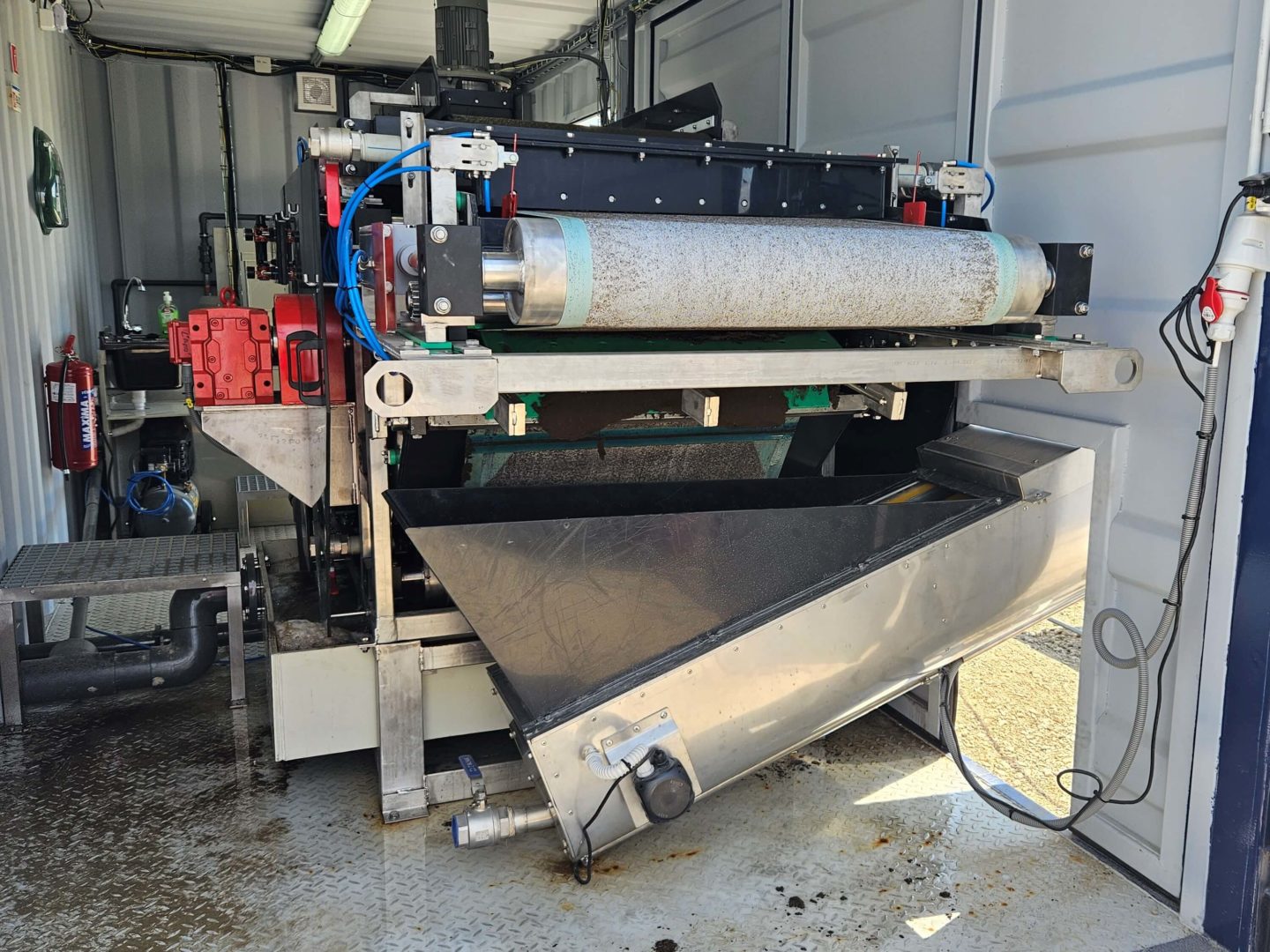
Sludge dewatering line in a container
Based on the clients’ needs, VANEX has created a type of sludge dewatering line that can be placed in a shipping container, forming a comprehensive system with electrical and water installations. This modified dewatering container is a suitable choice for wastewater treatment plants that lack sufficient internal space, or their construction readiness is at a low level. The dewatering container can be placed anywhere outdoors, just prepare the supports (horizontal) and provide water, electricity, and sludge to the container.
All requirements for dewatering, with a focus on the maximum effective separation of the liquid component – water (with the possibility of recycling) and the solid component – sludge (and its pressing), are fully preserved.
Technical requirements:
- Homogenized sludge with an input dry matter content of 1-6%
- Voltage system: 3 + PEN ~ 50Hz, 400/230V, 32A, TN – S,
- Utility water (with a pressure of 5-6 bar), or the option to use filtrate,
- Drinking water (flow rate 1-2 m3/h, minimum pressure 0.3 MPa),
- Appropriate type of flocculant (powder, emulsion),
- Prepared supports installed horizontally
Variability of the sludge dewatering line in a container
The sludge dewatering lines in VANEX containers are adapted for maximum functionality and efficiency based on the specifications. In the container, various modifications of pressing/thickening lines can exist depending on the components it comprises. The fundamental component is a belt press, to which additional components are added as needed. An example of a standard dewatering line in a container:
Belt press with chemical preparation unit and conveyor
Principle of operation: In the chemical preparation unit, a flocculant solution is produced. It is introduced (via a dosing pump) into the dynamic mixer on the belt press, where it is mixed with sludge (introduced by a sludge pump). The mixture (sludge and flocculant) is separated into a liquid and solid component after the pressing process. The solid component falls onto a belt conveyor, which transports it to the designated location.
